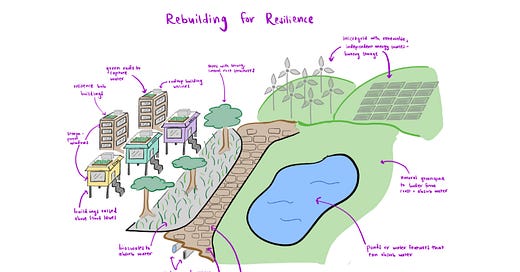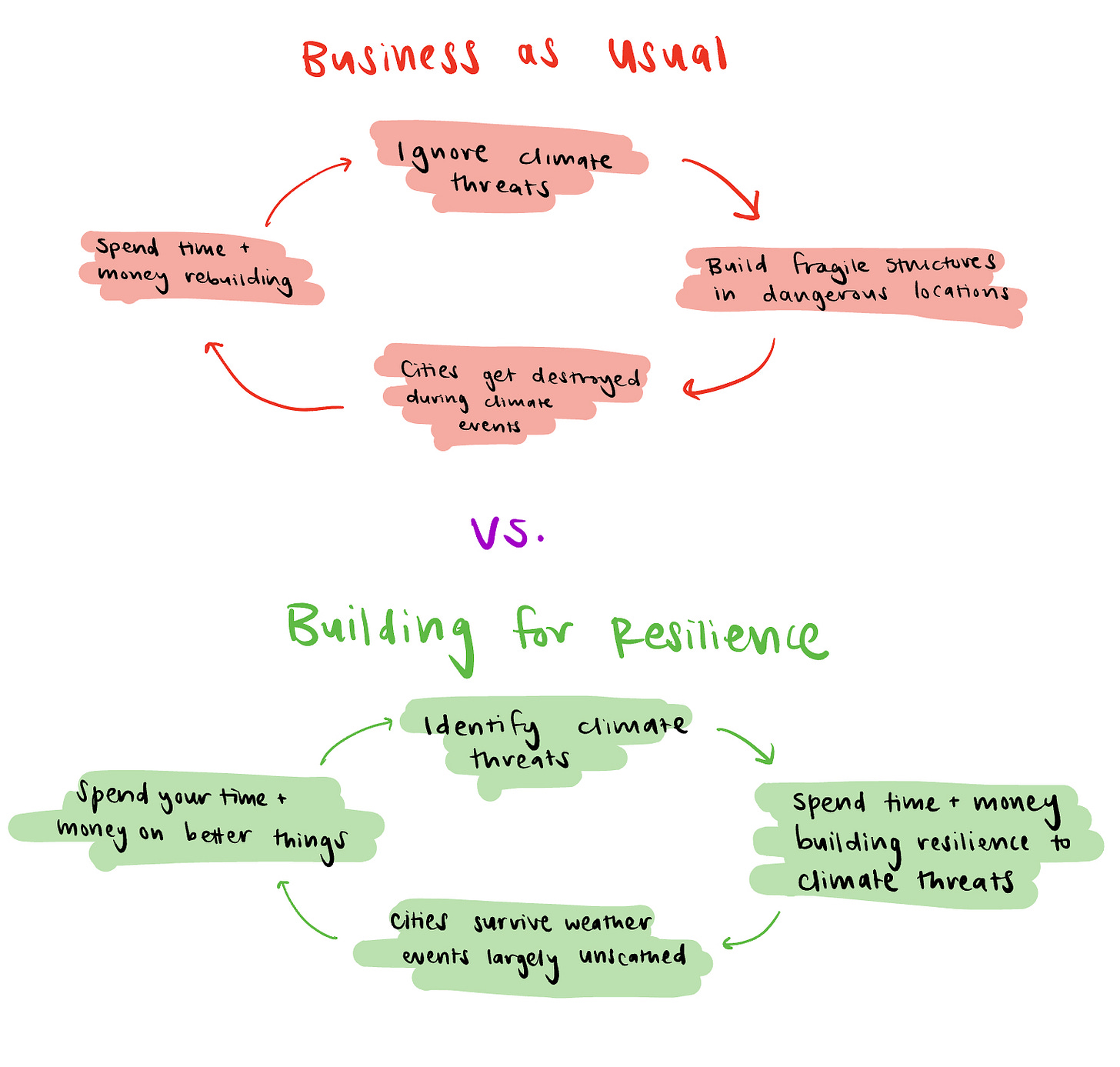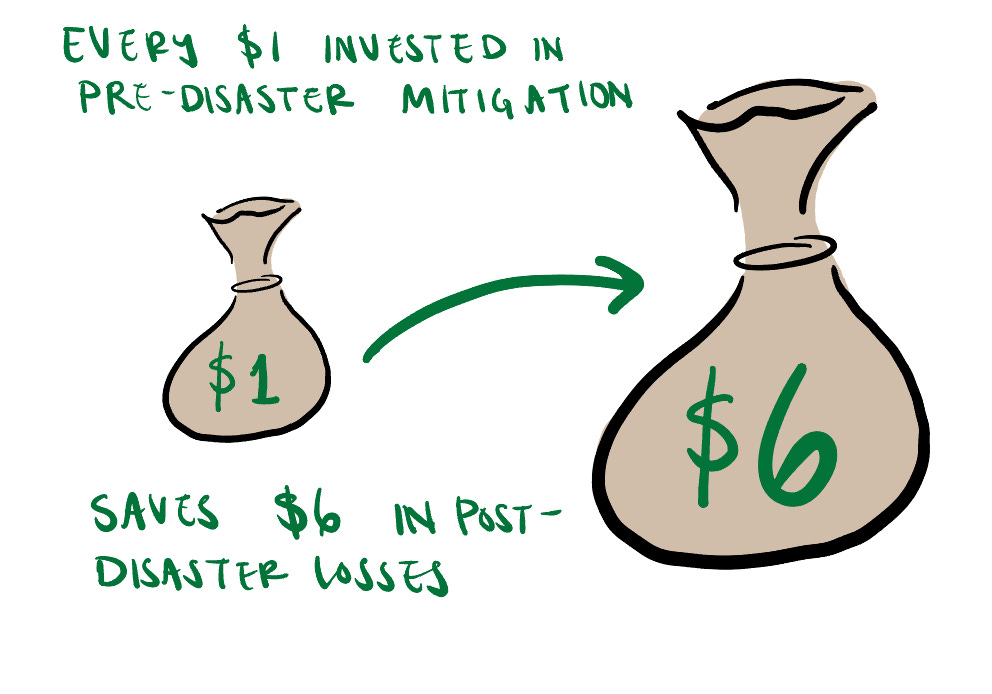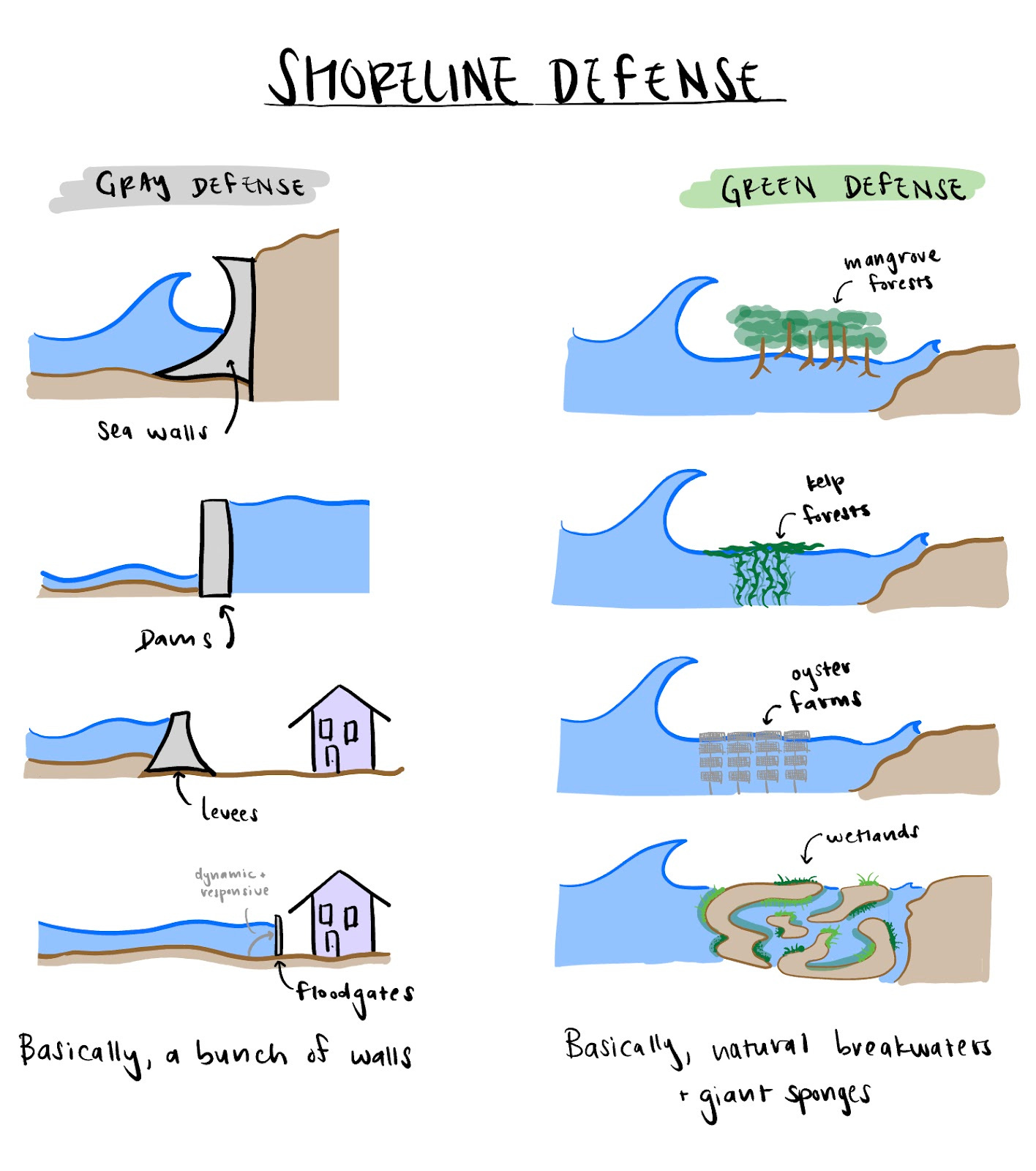Flipping the Script and Rebuilding for Resilience
Some solutions, because we're tired of bad news
Odds are, if you're reading this, you know about Hurricane Ian. And you probably know about the degree of destruction left in its wake across Florida and the East Coast. (We'll spare you the details - there are lots of other places to read about the bad news. The high level: over 100 deaths so far, with ~ $75 billion in economic losses).
Instead, we want to frame Ian as an opportunity to take action & build some solutions — really, it's about time.
Actually, it's way past time. We've seen hurricanes wreak havoc with increasing intensity and frequency over the last few decades (Fiona, Katrina, Nargis, Harvey, Sandy, Maria, Haiyan, Andrew… the list goes on). Often, it takes less than a week for most disasters to leave the public eye, while communities are left to rebuild their lives. This time, we need to hold our focus and figure out how to rebuild for resilience.
"Building Back Better"
Parachute isn't a political publication, but you have to admit, the phrase "Build Back Better" is pretty catchy. The problem is, there's no unified, exciting vision for what "better" really means in this context. So we're offering our version of it, and how to get there:
Start with good intel.
Programs like the Open Data for Resilience Initiative combine the power of local mapping communities with technology solutions from companies like Mapbox and OpenStreetMap to build a comprehensive understanding of a city’s disaster risk. New startups such as FloodMapp and CloudToStreet use satellites, machine learning, and on-the-ground observation to predict how waters will flow and which assets will be most impacted. These companies are set to receive a flood of new business (pun intended) as the SEC and global regulatory bodies mandate that companies report climate related financial disclosures. Establishing an effective risk retention and risk transfer strategy can also help governments, businesses, and citizens build financial resilience in the face of climate change.
Take the high road (or the high ground?).
Building + rebuilding is important. But until we've created completely indestructible structures, we should be picky about where we build. Maybe we shouldn’t be rebuilding on the same wedge of sand that stands in hurricane paths year in and year out. We all love beaches - but beaches should be what they are intended for: sun tans in good weather and natural coastal protection barriers in bad weather. Simple as that.
Get your finances in order.
Disasters cost a lot of money. $210 billion a year, last we checked. Disasters also cost a lot of lives. 91% of these are in developing countries. It’s the most vulnerable who are most at risk and need the most help. Increasing a city’s financial resilience is key, and reserve funds for strong social safety nets can protect those who are most impacted by climate change. Sonam spent years working with the Government of Pakistan and Munich Re to develop a Disaster Risk Financing and Insurance program. An effective risk retention and risk transfer strategy can help governments use limited public resources for things that matter - like educating the next generation to not make the same mistakes we’ve made for the past 200 years in warming up our planet.
Build with resilient materials + designs.
Sick number that Sonam just shared with Lyn: for every $1 that we spend on pre-disaster mitigation, we save $6 in post-disaster losses. Less sick number that our friends Sophie and Kim at Climate Tech VC shared with Sonam and Lyn: without climate adaptation, unmitigated climate change will result in $5 trillion in damages for coastal property in the contiguous US through 2100.
So, let's invest early in resilience when we're building + rebuilding. Below, we have some examples of solutions we have right at our fingertips.
Solutions time:
When it comes to hurricanes and cyclones, the first line of defense is typically along the shoreline, before we get to land. Shoreline defense usually comes in two flavors: gray and green.
We're more bullish on green defense, since current versions of gray defense tend to be more costly, require more maintenance, destroy our natural ecosystems, and have histories of failure (e.g. let’s not talk about the levee failures during Hurricane Katrina). Plus, pretty much all of the green solutions have co-benefits, such as urban cooling, carbon sequestration, ocean de-acidification, biodiversity promotion, job creation, and even tasty oysters (Lyn is technically allergic to shellfish, but will take the hit for oysters 10 times out of 10).
Once we've moved on from the shoreline, we can look at solutions in our urban environments. Instead of listing them out, we incorporated them into a doodle that took approximately 71203 hours to draw:

For those who haven't seen the news, Babcock Ranch is a community in Florida that went through the very thick of Hurricane Ian relatively unscathed. Their use of street designs, surface materials, tree species, and a local solar grid helped them keep the lights on and their community entirely intact.
In Miami Beach, Lyn chatted with Yanira Pineda, who was a part of the team that helped elevate streets to prevent flooding (Miami Beach can flood even on sunny days). They paired street raising with new pumps, wells, and other stormwater infrastructure to protect nearby homes, businesses, and structures.
Ten years ago, Arverne by the Sea in New York was the only community on the oceanfront Rockaway Peninsula that survived Hurricane Sandy. When constructed in 2004, the 120-acre development was raised 5 ft, and includes underground utilities, submersible transformers, underground drainage chambers, and concrete slab foundations. The beach grass near the boardwalk was meticulously maintained and served as a beautiful, natural buffer.
And as usual, here are several companies doing the work today to make sure we're ready for the climate of tomorrow:
The Addition Company is engineering living sea walls to create a hybrid gray/green shoreline defense barrier.
🦪 ORA Estuaries is developing an Oyster Scaffold technology that will empower communities to grow living oyster reefs into building blocks for coastal restoration.
🔋 Form Energy is developing a new class of cost-effective, multi-day energy storage that will be an important step in microgrid design and energy independence. PS - They raised $450 million yesterday from an esteemed group of investors!
🔨 Smart Walls Construction is doing exactly what they say - engineering new, smart, telescoping walls that can automatically deploy during flood events to keep water away from important buildings.
Natrx offers a whole host of coastal resilience engineering solutions, from artificial reefs to breakwaters. The slider at the bottom of this page pretty much speaks for itself.
🔩 Zilper offers an affordable, adaptable technology to install underground utilities — from aqueducts to sewers to electricity infrastructure.
💧 Netafim utilizes its patented drip irrigation technology in 40 countries to collect rainwater and distribute it to crops in the field exactly when and where they need it.
infraSGA's RAFT is a bioretention system (think high-tech bioswale) that helps move surface water into the ground, preventing flooding and cleaning the water along the way.
Have a company or solution that you'd like to share with us? We'd love to learn about it and share it with cities across the globe. Email us at hello@parachute.earth. (And thanks to everyone who has already dropped us a line - we love hearing from you!)
Location check: For the next couple of weeks, Lyn and Sonam will be taking a quick hiatus from travel to focus on writing our findings from the past few months. Lyn will be in LA and Sonam will be in NYC. If you're a local, we'd love to see you! (And if you're not, reach out anyway to say hi. We're both extroverts and like making new friends)







